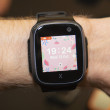Review: HTC One V for Virgin Mobile
Aug 14, 2012, 11:09 AM by Eric M. Zeman
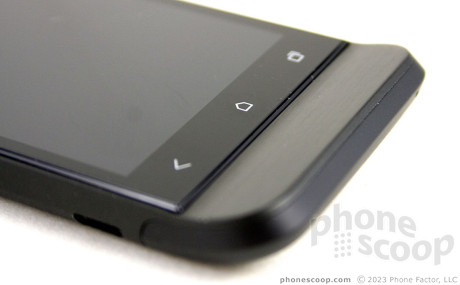
HTC's One V is a retro-tastic Android smartphone that may be small in size, but is big at heart. Read all about the One V in Phone Scoop's full review.
Form
Is It Your Type?

Virgin's new smartphone from HTC is the latest One Series device to hit the U.S. It combines some retro-HTC styling with Android 4.0 and Sense 4.0 in a small, attractive package. If you're not one to suffer smartphone envy and don't need or want a monstrously large device, the HTC One V packs plenty of punch.
Body
Bigger isn't always better, and HTC knows this. The One X (AT&T) may be HTC's flagship device for the year, but the One V is nearly as good and offers its target market a lot of bang for the buck.
HTC revitalized a design it used way back in 2008/2009 and gives it a modern twist. It revives the "chin" that appeared on several of HTC's first Android devices, such as the G1, Hero/myTouch 3G, and others, but uses a more modern manufacturing technique and materials. The One V is skinned mostly in metal (milled aluminum) and feels great. I generally find that I like the feel of metal in my hand more so than plastic (especially cheap plastic). There's a step up in quality that can't be dismissed. The One V has more personality in the hardware than a number of other devices in the market, if for no other reason than its Jay Leno-inspired looks.
The smaller screen means the overall footprint of the device is reduced to a comfortable-to-hold size. It fits snugly in your hand and is easy to wrap your fingers all the way around. Much of the metallic surface is covered in a grippy, matte paint job that gives it some staying power in your grasp, even on a hot summer day when your hands might be a bit sweaty. The small size makes it comfortable to store in your jeans pocket, no matter how tight they may be.
On HTC's older devices, the chin was where you'd find the Android controls and maybe even something like a trackball or optical mouse. Thanks to Android 4.0 and its three-button configuration, there are no such controls on the One V's chin. Instead, the entire front surface has a clean, tidy appearance interrupted only by the white symbols for the capacitive buttons below the display. There's a noticeable edge where the bottom of the display meets the chin, though. I dislike this edge a bit. It's not sharp, but it breaks up what would otherwise be a smooth feel to the front of hte phone. I can see how it will help some users more easily find the capacitive buttons without looking at the phone, though.
HTC keeps other aspects of the hardware design minimal. The USB port, for example, is the only element on the left edge of the device, and it's carefully positioned close to the bottom so as to leave most of the left side a smooth, comfortable surface. The only hardware element on the right edge is the volume toggle. In keeping with HTC tradition, the One V's volume toggle is a thin sliver, but this time HTC got it right. The One V's volume toggle feels great under the thumb and offers excellent travel and feedback.
There is no dedicated camera button, which is a shame.
The lock button is on the top of the phone. It can be somewhat tricky to press, as it is on an angled surface. The travel and feedback of the button are very good, though.
The battery is not accessible to the user, but the bottom of the chin pops off in order to provide access to the microSD card slot. Aside from installing/removing mircoSD cards, you'll have no other reason to open this little hatch.
In all, I like the hardware quite a bit, despite a few minor annoyances.
The Three S's
Screen
In order to keep the sale price of the One V down a bit, HTC went with a screen that's not as stunning as those on the One X and One S. The V's display measures 3.7 inches across the diagonal and offers 480 x 800 pixels. This is a resolution common to mid-range and low-end Android smartphones. Despite the less-than-HD resolution, the Super LCD looks fantastic. It's very bright, colors look rich, and most on-screen elements look sharp and free of pixelated edges. I found it to be usable outdoors, though taking pictures under a bright sun was a bit difficult.
Signal
Virgin Mobile USA operates on Sprint's CDMA-EVDO network, which means the HTC One V does, too. During my tests with the device, it performed very well on the Sprint/Virgin network. In fact, it performed a bit above average. When other Sprint devices showed two bars of coverage, the V showed three. Additionally, the V was more consistent at making phone calls on the first try and connecting to the web when compared to other Sprint devices tested in the same area. I had no problems at all with the One V, and the device never dropped a call while in my possession. The One V can't use WiMax or LTE, so data speeds are limited to about 1.2Mbps over 3G.
Sound
Holy moley, this is one loud phone. The earpiece is so loud when set up all the way, it felt like somebody stabbed a sewing needle into my ear. I found that lowering the volume to about 60% is perfect for most situations. It's still loud enough to be heard — even in noisy restaurants — without causing hearing loss. Wanna know about the quality? Good. Very good, in fact. I was pleased with the warmth of voices coming through the earpiece. The speakerphone isn't nuclear-klaxon loud, but it's good enough for most environments. It was easily audible over background noise such as a TV or several conversations in the same room. Quality of calls through the speakerphone was quite good. The ringers and alerts were jarringly loud, and the vibrate was strong enough that I felt it even when the One V was in my backpack.
Battery
Thanks in part to the smaller display, less-powerful processor (more on that in a moment), and lack of 4G, the One V delivers solid battery life. I consistently scored 36 or more hours of battery life from a single charge, despite using the device for email, social networking, and listening to the new Tremonti album over and over. I suspect most users will charge it every night, but if you forget to plug it in before passing out at night, you'll be good through lunch the following day. That's as much as you can ask from any smartphone these days.
Basics
Menus
The One V runs Android 4.0 Ice Cream Sandwich with HTC Sense 4. The system software and user interface are identical to that of the One X/One S. Anyone who's ever picked up an HTC Sense device will know exactly what to do with the V.
The lock screen on the V offers a handful of customizable shortcuts. You can set up to four apps/actions on the lock screen that will launch when you drag them down to the little ring at the bottom of the screen. The defaults are phone, mail, messages, and camera, but you can swap these out at will. It's cool that you can use a shortcut and a security passcode at the same time.
The central home screen panels all have a permanent dock at the bottom of the screen that holds five app shortcuts — the same four as the lock screen, plus the main app menu. These can also be customized if you wish.
There are three standard Android buttons below the display: Back, Home, and Multitask. The first two are self-explanatory. Pressing the multitask button reveals a graphical listing of all the recently used applications. The hardware menu button has been removed entirely in Android 4.0, so you have to get used to find the three little dots within the applications themselves, which are the new indicator for the menu items.
The drop-down notification shade collects notification as before, but with Android 4.0 you can now dismiss individual notifications by swiping them sideways.
Applications are laid out via grids on the V. Swipe the pages to the left and you'll eventually jump from a list of all the apps to a list of all the widgets that are available. The widget menu lets you see what the widget looks like and tells you how big it is. You can alter the appearance of the main app menu in several different ways.
Last, a few words on performance. Truthfully, I was worried that the 1GHz Qualcomm Snapdragon S2 processor wouldn't be up to the task of running Android 4.0 on the One V, especially since HTC stuck far more powerful processors in the One X and One S. As it turns out, my worries were for naught. The One V didn't show any performance problems; I didn't see any stuttering or jerky screen transitions, and applications performed just as well as they do on HTC's more capable handsets.
Calls/Contacts
The phone app in Sense 4.0 defaults to the dialer when opened, with a list of recent calls and favorite contacts above the dialer. Touch any of the contacts above the dialer, and the dialer goes away and you can see an expanded view of your contact list.
Perhaps the best part of HTC's customizations to the phone software are the gesture-based actions. For example, if the phone rings, turn it over to silence the ringer. Or, if you pick it up, the ringer won't silence completely, but will drop significantly in volume. You can also set the One V to recognize when it is in your pocket so that it will automatically vibrate as well as ring.
As for widgets, they are plentiful. You can set direct dial shortcuts to the home screen, and there are three different styles of widgets for your favorite set of contacts. I particularly liked the contact widgets, and found them to be useful for organizing my contact groups.
Messaging
The V offers both individual and system-level messaging tools. The individual apps include the basic toolset from Android, such as Gmail, email, SMS, Google Talk, and Google Voice. These are all fine applications that continue to be useful for composing all sorts of messages. There aren't any other IM apps, so Google Talk is your only option out of the box.
In terms of social networking, the V offers integration with Twitter and Facebook within the OS. Sign into your social networking account and you can do things such as share photos, or messages from within other applications more easily. Twitter and Facebook are also both preloaded on the V as individual apps.
Other messaging and social networking tools include Google+ and Google+ Messenger, Latitude, and HTC's FriendStream (its own, custom-made widget that collects Twitter and Facebook posts in a visually pleasing package). Each has its own widget or home screen shortcut.
Extras
Media
Virgin Mobile Live
The One V's stand-out media feature is Virgin Mobile Live, Virgin's streaming content application and service. Virgin Mobile Live offers streamed music, broadcasts, concert footage, blogs, and movies. It is an all-encompassing media service that offers bits and bytes of everything, though it's curated by Virgin Mobile. Speaking of bytes, be careful. Streamed content eats up data allotments quickly, and Virgin Mobile throttles users who exceed their data allotments.
Music, Video
With respect to music, the One V has the basic Android music player app, plus TuneIn Radio, and the Google Play Store if you want to purchase tracks directly from the handset. These apps function just as well on the One V as they do on other Android 4.0 handsets.
On the video front, the V includes the stock YouTube app and the Google Play Store. Notably absent is HTC's own HTC Watch application, though Google Play offers essentially the same thing.
Thanks to the Beats Audio integration, music and video sound great through the V. I was impressed with the quality. What I really like is that the Beats software has been buried deeper into the OS, and works with ALL media apps on the device.
Camera
Camera
The One V uses the same camera software that's found on the One X and One S. The performance is good, though it's the one app I'd say suffers (just a wee bit!) from the slower processor of the One V.
Since there is no dedicated camera button, you have to open the camera from a home screen shortcut or the lock screen shortcut. It opens very quickly. The controls are laid out simply. On the top-left corner you'll see the flash controls. Rather than obstruct the screen with a drop-down menu, it cycles between on, auto, and off every time you press it.
The full settings menu lets users adjust video quality, the review screen, the ISO, white balance, etc. There are some really cool advanced features, such as continuous shooting and video stabilization. There are also different types of capture and scene modes, such as HDR, panorama, portrait, macro, etc.
The V has a dual-shutter button. The top half shoots still images, and the lower half captures video. The result is you never have to switch between camera or video modes, you just choose the shutter button that takes pictures, or the one that shoots video. The really neat feature is that you can take still images while recording video (without interrupting the video.)
The software is mostly quick, though every so often (not all the time) it was slow to focus, or took an extra second or two to save an image. The delays are nothing egregious, but it was noticeable when compared to a One X (admittedly, a whole different class of phone.)
Gallery
The main view of the gallery shows stacks of photos, images, and videos floating on the screen. They are broken down into groupings such as Camera Shots, All Photos, All Videos, and Screenshots. At the top of the screen, you'll see a drop-down menu that says "Albums." Press it, and you'll automatically see a list of all the photo albums associated with the phone and your online accounts, such as Facebook, Flickr, DropBox, or Picasa.
Once you drill down into the album of your choice, there are four buttons along the bottom for performing select actions (share, delete, edit, more). You need to tap on an individual photo to load it. You can of course share photos through any social network/messaging service you want. You can set the images as your wallpaper, print it, see the photo's location on a map, etc.
Editing features are very limited. You can crop, rotate, or apply effects. That's it. The effects run the typical selection, such as black & white, antique, etc. There is no third-party photo editing software, but there is a video editor. It lets you piece together videos you've captured with the phone into simple projects.
Photos/Video
Photos
The One V may be limited to a 5-megapixel camera, but it does quite a good job. I was pleased with the majority of shots I took, which were in focus, exposed correctly, and showed accurate colors. There's slightly more grain found on images taken indoors, but the bright flash will help offset the grain a bit if you use it. The One V can easily replace a point-and-shoot camera for daily use, but probably not a DSLR for serious photography.
Video
The video camera maxes out at 720p HD video. I thought the results were very good. The footage I captured was smooth, focus was good, and panning the camera about didn't make me sick to my stomach. I wouldn't recommend you use it to record your cousin's wedding or your kid's first day at school, but for everyday video needs it's a good alternative to dedicated video equipment.
Browser/Customize
Browser
The stock Android 4.0 browser is decent. As far as rendering web pages goes over Virgin's 3G network, it does just fine. I was really quite impressed with how fast the browser operates and how good web sites look on the display, despite its somewhat constrained size and lack of 4G radio. Do yourself a favor, though, and download Chrome 1.0 for Android. It is a fantastic browser that's available to Android 4.0 devices, and worth skipping the stock browser for. It's faster, cleaner, and more intuitive to use.
Customize
HTC's Sense 4.0 lets you fine-tune nearly every facet of the One V's behavior and appearance. The modifications that matter most to most people, such as scenes, skins, wallpapers, and ringtones are a web of interlaced and related settings that take some time to learn to use properly. The most useful tool of Sense is the one that lets you customize the lock screen shortcuts.
Extras
Apps
Virgin Mobile didn't go overboard with the bloatware. In fact, the One V is pretty clean compared to other devices. Sure, there's a My Account app, and the Virgin Mobile Live app, but most other apps on board the One V are from Google. Obviously, the Google Play Store is at your disposal for gorging on your own favorite apps.
Bluetooth
The V's Bluetooth radio works perfectly. It paired with every device I could find. Phone calls, in particular, sounded excellent when sent through my car's hands-free system. Music sounded very good when sent to stereo Bluetooth headphones. I had no issues pushing files to/from the V, either.
Clock
The One V has the same over-the-top clock options found on the One X and One S. There are 18 clock widgets on the V. Any of them can be chosen as the home screen clock, but not the lock screen. The clock on the lock screen is a smallish, digital affair that is positioned at the top of the screen. It's readable at arm's length, but can be hard to see in bright sunlight if you've chosen a light wallpaper.
GPS
The GPS worked very well. The V's GPS radio was able to lock on my position in less than 30 seconds, and was accurate to within about 25 feet. Thanks to the solid network access and an accurate GPS radio, directions with Google Maps were spot-on and close to real-time.
Wrap-Up
The HTC One V is an all-around solid performer. It may lack the sex appeal and flashy specs of its larger HTC brothers, but for this class of device, it's hard to beat. The aluminum materials and Leno-esque chin give the One V a great little personality, while quality build and a comfortable footprint make it a joy to use as a daily driver.
The One V attaches itself to Sprint's 3G network and holds on tight, connecting calls and powering web-browsing sessions seamlessly. Calls sound great, the display looks good, and the battery outlasted me day in and day out.
Toss in the good system software from HTC, the surprisingly good performance from the Qualcomm processor, and excellent media powers, and the One V is a winner in all respects. Perhaps the only bummer is the V's lack of 4G, but you can't have everything.
As long as you can live without 4G , the One V is the best device for the money from Virgin Mobile.
Comments
I made the mistake--
(continues)
The sticker makes it easy for a retail employee to activate the phone when selling one.
This may be too specific of a question,
From my understanding the S2 processor would definitely be a step up for both performance and battery life compare to the S1 in the Desire, but would you consider the difference between the phones to be enough to warrant an upgrade?












































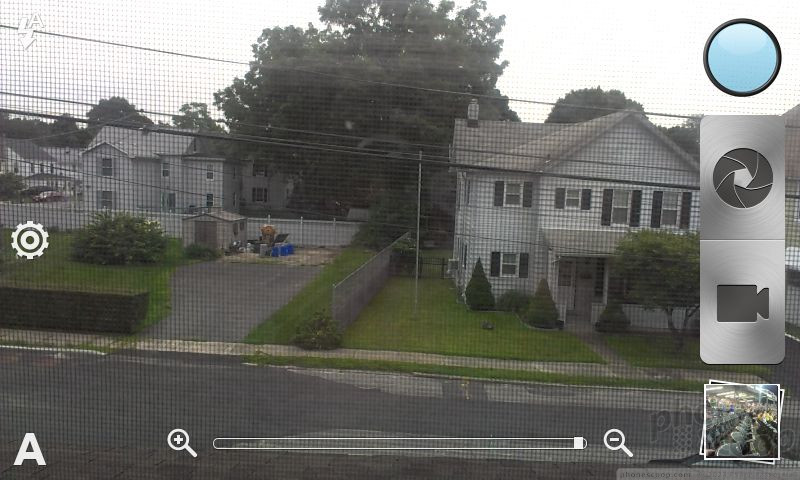



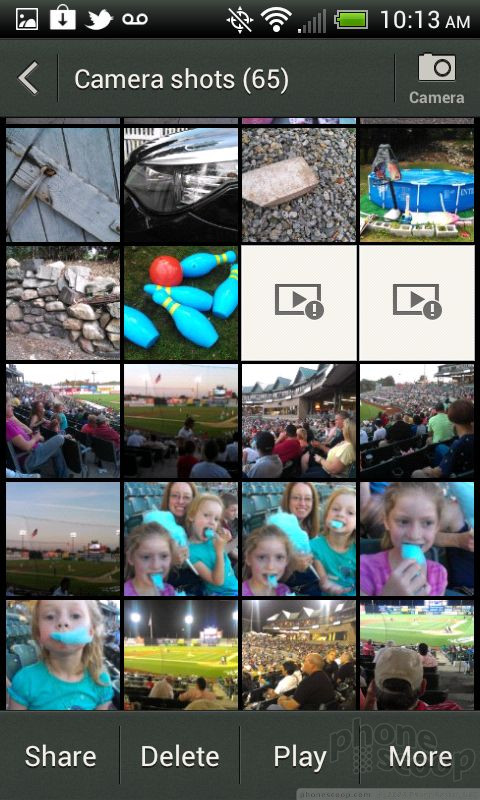


















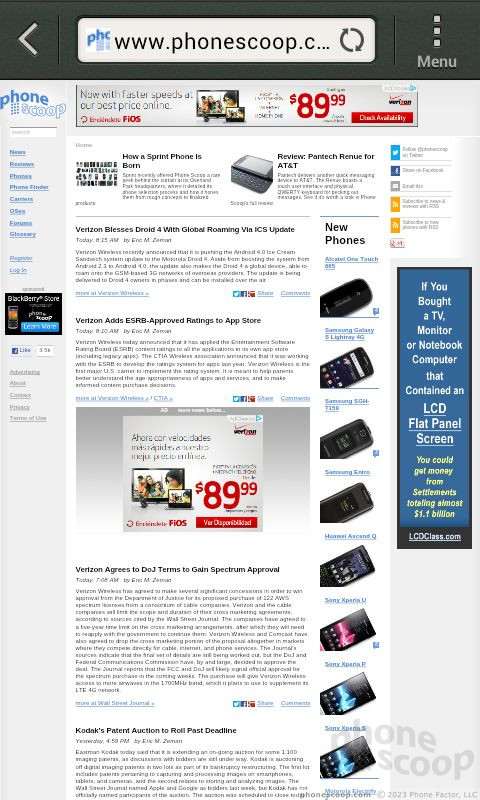




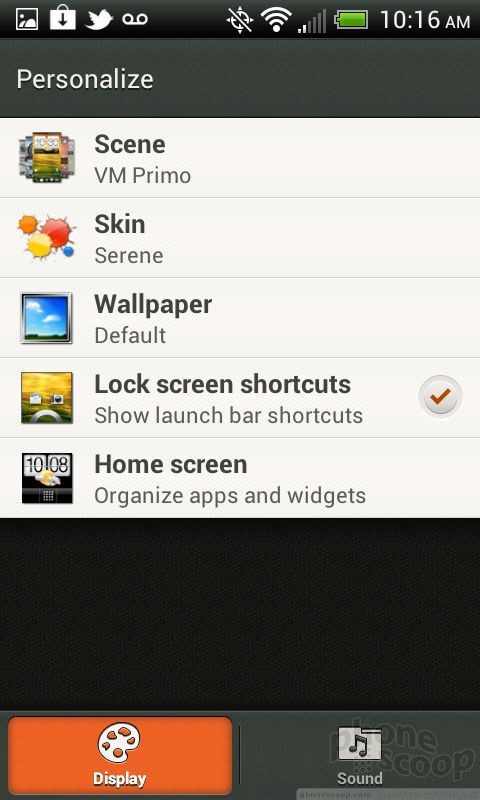



 Hands On with the HTC One V
Hands On with the HTC One V
 Liveblog: HTC
Liveblog: HTC
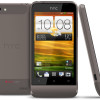 HTC Brings Back the Chin with the One V
HTC Brings Back the Chin with the One V
 HTC One V
HTC One V



